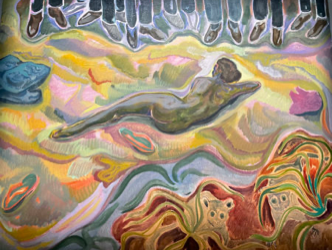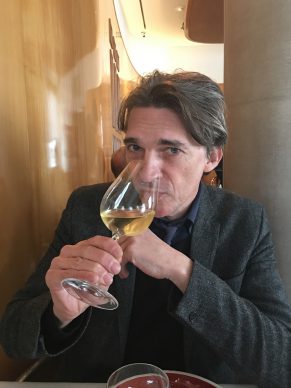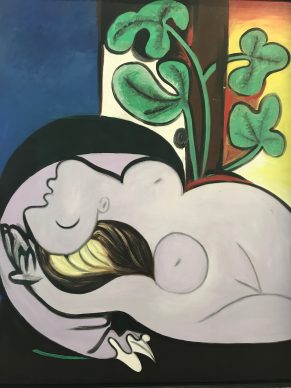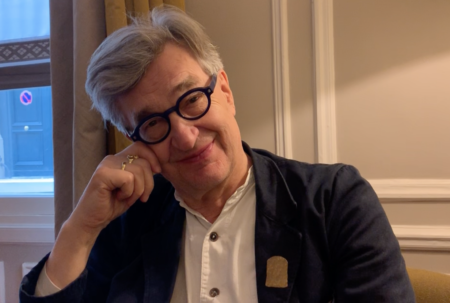Just look at Picasso, steeped in knowledge from a very young age thanks to his father who was an art teacher.
Similarly, these days a major artist such as Scottish painter Peter Doig (born in 1959) will speak openly of the importance of the Norwegian artist Edvard Munch.
Then you have the German artist Georg Baselitz (born in 1938), currently the subject of a major retrospective at the Beyeler Foundation in Basel, who has never hidden his admiration for a long-forgotten French artist, Jean Fautrier (1898-1964).
As it happens, a large-scale exhibition of 140 paintings and 25 sculptures at the Musée d’art Moderne de la ville de Paris t is restoring Fautrier to the status he deserves.
The director of the museum, Fabrice Hergott, explains the spirit of the exhibition.
And it’s no accident if we observe the influence of major painters in his work.
In Fautrier’s painting you can sometimes see Turner, other times Rembrandt, and even Chardin.
But Fautrier didn’t hold back from flirting intensely with abstraction.
He creates what in specialist jargon would be termed “art informel”. Using a real event or set-up as a starting point, Jean Fautrier creates abstract forms by working the material in a particular way and giving free rein to the unexpected.
His best-known series, which brought him fame during the post-war period, is known as the “Hostages” (« Otages »).
In these paintings, it’s as though Fautrier is positioned listening behind a wall, while the Germans are killing prisoners on the other side.
He presents the faintest suggestion of heads caved in, bodies that have become inert masses.
The painter does not actually depict the slaughter. He paints indistinct forms out of which certain clues emerge, like a hand or blood, which indicate the context of the work.
But before that, during the 1920s, he made remarkable expressionist style paintings.
His “Still Life with Pears” (« Nature morte aux poires ») from 1927 is a must-see. Against a grey-black background, three pears shine out with a spectral luminosity; the play of light is reminiscent of Turner or even Rembrandt.
Fautrier, it would seem, liked his women. His painting “The Pretty Girl” (« Jolie fille ») from 1926-27 is a brown mass with a sculptural body in which he decided to make the face barely visible. He is radical. Just like when he decided in 1922 to paint the “Portrait of My Concierge” (« Portrait de ma concierge ». His painstaking portrayal brings the old woman to life in shades of grey, black and purple: a portrait of mourning.
Despite his evident talent, today the artist remains shunned by the art market.
For Fabrice Hergott: “He’s a giant of painting who has achieved success over several periods. But his relationships with dealers lacked continuity and his catalogue raisonné remains unpublished. It is being prepared by Marie-José Lefort”.
While Jean Fautrier got on well with the poets and writers for whom he freely illustrated texts, he had difficult relationships with his fellow painters, which can’t have done wonders for his future fame.
According to Parisian art dealer and Fautrier specialist Franck Prazan, owner of the Applicat-Prazan Gallery, “the market never recovered from the period of speculation over Fautrier at the end of the 1980s. Obviously if an exceptional piece from the ‘Hostages’ period of the 1940s were to be presented at auction, it would no doubt go for a huge sum. But his market is made up of art enthusiasts. Regardless of the financial stakes, they won’t part with their rare paintings easily.”
The artist’s record price at auction dates from 2011 with the sale of a “Hostage’s Body” (« Corps d’otage ») painting from 1943 in London for 2.9 million euros. At his gallery, Franck Prazan presents pieces from all periods of the painter’s oeuvre, on sale for between 200 000 and 1.2 million euros.
According to the Artprice database, the market for Fautrier at auction over the past 17 years has been mainly taken up with the sales of drawings (38.5% of lots) and prints (43.1% of lots) at modest values (generally around 500 euros to 5000 euros). The transactions for the father of the “Hostages” series therefore operate according to two tiers, marked by the absence of the most sought-after paintings.
Lastly, still according to Artprice, the Fautrier market is not a very enticing one. 100 000 dollars invested in the artist’s works in the year 2000 is equivalent to 52 000 dollars today.
Of course, these statistics fail to distinguish between the artist’s different series and between the different artistic mediums (prints, paintings etc), but they do confirm one thing:
that the art market and art history do not always go hand in hand.
The legendary first French minister of culture André Malraux used to say that Fautrier reminded him of Goya. Fautrier is, in any case, one of the great painters. The master of a modern tragedy.
Until 20 May, www.mam.paris.fr.
Support independent news on art.
Your contribution : Make a monthly commitment to support JB Reports or a one off contribution as and when you feel like it. Choose the option that suits you best.
Need to cancel a recurring donation? Please go here.
The donation is considered to be a subscription for a fee set by the donor and for a duration also set by the donor.



















